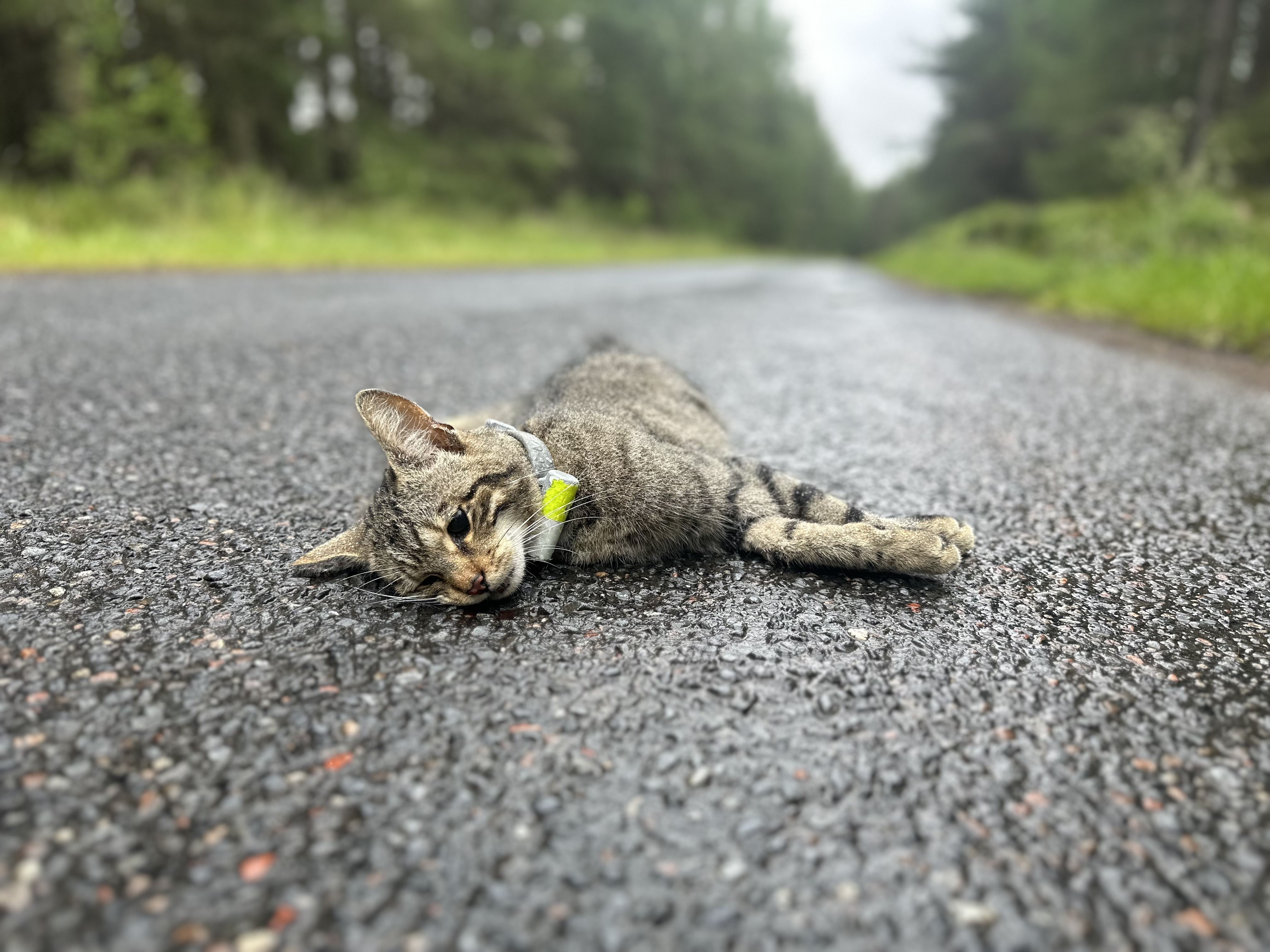Second cohort of wildcats released into the Cairngorms National Park
Content warning: Graphic image below of deceased wildcat
Following the release of 19 wildcats last year, a further nine wildcats have been released into the Cairngorms Connect landscape this summer, marking another important step towards restoring the species in Scotland.
Introducing more wildcats to the developing population brings all-new questions and challenges. Saving Wildcats field manager Dr Keri Langridge, said “The release strategy this year was informed by the post-release behaviour and ecology of the first cohort, and balancing the risks and rewards of a few more individuals in certain locations”.
Two more wildcats were released in the north of the site, including one male, in hopes that he would potentially breed with the two female wildcats that have adopted territories here. The other five were released from locations in the south of the site, where there are still unoccupied areas of suitable habitat.
However, despite intensive planning from the team, the releases this year have been significantly more challenging than last summer. The weather conditions have been unfavorable, with prolonged periods of very heavy rainfall throughout the summer, which makes it very difficult for the newly released wildcats to get out and learn about their new environment, and to hunt for prey animals. The poor weather has been compounded by the lower availability of voles, due to a cyclical decline in the population, which means that all the wildcats must work harder to find food.
The Saving Wildcats field team closely monitor all of the released wildcats using GPS-radio collars and a network of camera traps and have been providing them with supplementary food in the weeks immediately after their release, while the cats learn about their new environment.
Sadly, two individuals died shortly after their release. The first was a female wildcat named ‘Midge’ who was found by Cairngorms National Park Rangers on an early morning patrol, after she had been hit by a vehicle the night before, suffering fatal injuries to her pelvis and abdomen. “This was very bad luck – we expected our first road mortality to be on the A9 or one of the larger trunk roads, not on a minor road at midnight. Midge was doing well before this and had a stomach full of voles and mice”, said Dr Langridge.

The second, a female named ‘Oats’, died of starvation around four weeks after her release. “The team went to search for her after her GPS data indicated that she wasn’t moving. Unfortunately, she had moved to an area that was unlikely to have a good food supply, and she had not returned to the soft-release pens to take the supplementary food that was being provided”.
Dr Helen Senn, the project Saving Wildcats lead said “Although we prepare the wildcats for release in the best way possible, life in the wild is incredibly challenging for all animals. Immediately after release they are particularly vulnerable as they learn to adapt to their new life in the wild, to locate themselves in their environment, to learn about threats, and to become efficient hunters. Nobody is more saddened by the loss of these animals than the people working with them, because a lot of care is put into providing each released animal with the best chance possible.”
“Every release, however successful, increases our knowledge. It is our responsibility to make use of this knowledge, so that subsequent releases have a better chance of succeeding than the ones preceding them. The project’s approach is to always take the opportunity to learn as much as we can from each case.”
“Despite these sad losses, there’s still a lot to celebrate: the survival rate of the wildcats released last year has been much higher than anticipated, and wild births have also increased wildcat numbers in the area. We’re excited to see where the future takes these wildcats and look forward to updating everyone on their progress.”
Background
In 2019, the International Union for Conservation of Nature’s Cat Specialist Group conducted an independent review of wildcat conservation in Scotland in 2019, concluding that there was no longer a viable wildcat population living wild in Scotland. The review recommended an increased focus on breeding for release to safeguard wildcats from extinction, which is what Saving Wildcats has focused on.
“Wildcats are one of Britain’s most threatened mammals and one of Scotland’s most iconic species, embodying wild nature for the Scottish Highlands. Although there are risks involved with releasing wildcats, inaction is not an option and will likely result in extinction”.
Saving Wildcats is led by the Royal Zoological Society of Scotland in partnership with NatureScot, Forestry and Land Scotland (FLS), The Cairngorms National Park Authority, Norden’s Ark, Consejería de Sostenibilidad, Medio Ambiente y Economía Azul de la Junta de Andalucía, with releases being conducted with the support of Cairngorms Connect.
Saving Wildcats is supported by the LIFE programme of the European Union and the generous support of the Scottish Government, Garfield Weston Foundation, the National Trust for Scotland, the People’s Trust for Endangered Species, The European Nature Trust, players of People’s Postcode Lottery, and Rewilding Europe's European Wildlife Comeback Fund as well as others. You can find out more about our supporters here.

